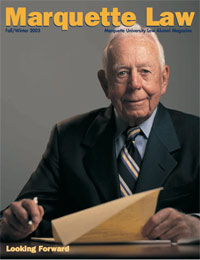Can You Be Forced to Turn Over Your Social Network Passwords in a Civil Case?
 Let’s say you’re the plaintiff in a civil case against a neighbor, an employer, or a company you’ve done business with. One of the many pains of litigation is the discovery process–the process whereby each side collects information that it believes will help it win the case. Discovery can come in many forms, such as conducting depositions (sworn testimony from witnesses), requesting documents, or even requesting permission to visit a site and look around.
Let’s say you’re the plaintiff in a civil case against a neighbor, an employer, or a company you’ve done business with. One of the many pains of litigation is the discovery process–the process whereby each side collects information that it believes will help it win the case. Discovery can come in many forms, such as conducting depositions (sworn testimony from witnesses), requesting documents, or even requesting permission to visit a site and look around.
But let’s say that you have a Facebook account. The other side believes that some of your Facebook communications might be relevant to the case, so they specifically request access to your account. You refuse, and the issue goes to the court to sort out (if you’re in federal court, under Rule 37, for those of you playing at home). How should the court rule? Specifically, what should the court order you to do? Do you have to give the password for your account over to a party that, to put it mildly, you are probably not on the best of terms with?
Surprisingly, at least one court has said yes [Update: see comments below], and I believe similar requests are being made in courts all around the country. I believe this is a deeply disturbing development and is the result of either a failure to understand social networking technology, the rules of civil procedure, or both.

 The area on the second floor of Eckstein Hall, running west to east from the elevators to the dean’s office, is the Huiras Lounge. It honors the extraordinary support that Ralph J. Huiras, L’41, gave to the building project — indeed, even though he made substantial gifts within the past decade to improve Sensenbrenner Hall, Ralph was, along with University Architect Tom Ganey, the earliest proponent of an entirely new home for Marquette Law School. Ralph felt especially strongly concerning the school, perhaps because it was his father’s alma mater as well: Peter M. Huiras graduated from Marquette’s law school in 1918, the same week that Ralph was born. The Huiras Lounge thus perpetuates Peter Huiras’s memory as well. There is much more that could be said concerning Ralph, who passed away this past weekend. Some of it has been said on past occasions, such as in
The area on the second floor of Eckstein Hall, running west to east from the elevators to the dean’s office, is the Huiras Lounge. It honors the extraordinary support that Ralph J. Huiras, L’41, gave to the building project — indeed, even though he made substantial gifts within the past decade to improve Sensenbrenner Hall, Ralph was, along with University Architect Tom Ganey, the earliest proponent of an entirely new home for Marquette Law School. Ralph felt especially strongly concerning the school, perhaps because it was his father’s alma mater as well: Peter M. Huiras graduated from Marquette’s law school in 1918, the same week that Ralph was born. The Huiras Lounge thus perpetuates Peter Huiras’s memory as well. There is much more that could be said concerning Ralph, who passed away this past weekend. Some of it has been said on past occasions, such as in